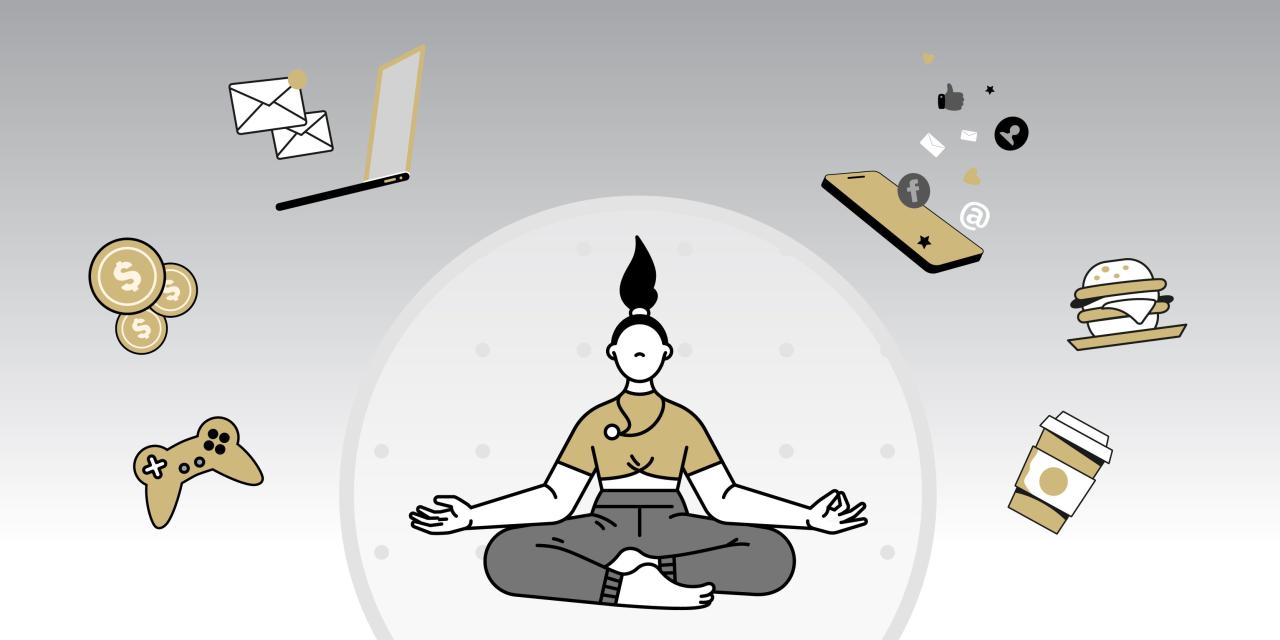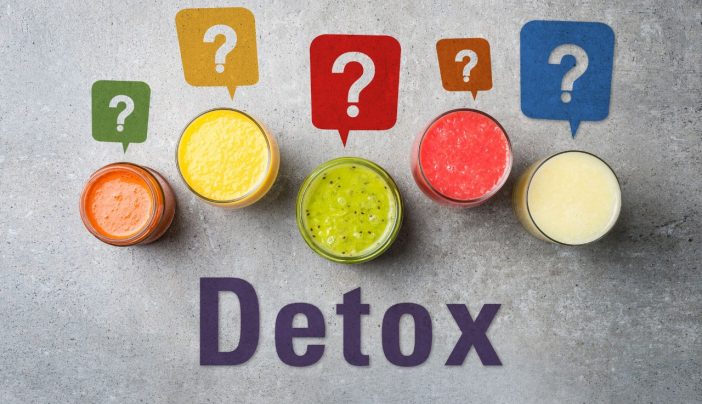One effective way to combat these negative effects is through a digital detox. A digital detox involves taking intentional breaks from technology, giving your mind and body the time and space they need to recover. This practice can lead to better mental health, improved productivity, and a more balanced life.
In this article, we’ll explore the importance of a digital detox, the benefits it offers, and practical steps to establish and maintain a healthy digital detox routine.
A. Understanding Digital Detox
1. What is a Digital Detox?
A digital detox refers to a period during which you intentionally disconnect from digital devices and online platforms. This can involve taking a break from social media, work emails, or any form of digital communication. The goal is to reduce the time spent on screens and regain control over your time and mental well-being.
The detox does not have to be extreme or long-term; even taking small, regular breaks from technology can make a significant difference. A digital detox could range from a few hours each day to a weekend or even a week-long break.
2. Why Is a Digital Detox Necessary?
With constant notifications and the pressure to stay connected, we often find ourselves overwhelmed by the digital world. This constant connection can lead to several issues, such as:
-
A. Increased stress and anxiety: The constant barrage of information can be mentally exhausting, leading to heightened stress and feelings of anxiety.
-
B. Disrupted sleep patterns: Excessive screen time, especially before bed, can interfere with sleep quality and make it harder to fall asleep.
-
C. Reduced focus and productivity: Constant distractions from digital devices can reduce our ability to concentrate on tasks, making it harder to be productive.
A digital detox provides a much-needed respite, allowing you to reset your mind and body. It helps you re-establish a healthier relationship with technology, fostering a sense of control and balance in your life.
B. The Benefits of a Digital Detox
Taking time away from digital devices offers several mental, physical, and emotional benefits. These advantages go beyond simply “taking a break” and can contribute to long-term improvements in overall well-being.
1. Mental Clarity and Reduced Stress
Constantly engaging with technology can overwhelm your mind, leaving little room for relaxation. A digital detox allows your mind to rest and reset, providing much-needed mental clarity. When you disconnect from the noise of the digital world, you create space for mindfulness and calm. The result is a reduction in stress and anxiety, leading to a clearer and more focused mind.
2. Improved Sleep
Using screens late into the night has been shown to interfere with the body’s natural sleep cycles. Blue light emitted from phones, computers, and other devices inhibits the production of melatonin, the hormone responsible for regulating sleep. Taking a break from screens, especially before bed, can help restore healthy sleep patterns, leading to deeper, more restful sleep.
3. Increased Productivity
Taking time away from digital distractions helps improve concentration and focus. Without the constant pinging of notifications, you can dedicate more time and energy to your tasks, resulting in greater productivity. This focused work allows you to achieve more in less time, leaving you with a sense of accomplishment.
4. Better Physical Health
Spending hours on digital devices often leads to poor posture, eye strain, and sedentary behavior. A digital detox encourages you to engage in physical activities such as walking, stretching, or exercising, helping to reduce the physical strain caused by prolonged screen time. Taking breaks from screens also encourages you to step outside, get fresh air, and improve overall physical health.
5. Improved Relationships
Constant device usage can interfere with relationships. When we are glued to our screens, we may miss out on important moments with family and friends. A digital detox allows you to reconnect with loved ones by being present in the moment, leading to deeper and more meaningful interactions.
C. Steps to Establish a Healthy Digital Detox Routine
Implementing a digital detox requires intentionality and commitment. Below are practical steps to help you develop a balanced routine that works for you.
1. Set Boundaries for Device Usage
One of the most effective ways to begin a digital detox is by setting clear boundaries for your device usage. Start by identifying the times and situations where you can reduce or eliminate screen time.
-
A. Set specific “screen-free” hours: Choose certain hours of the day to be completely free of screens. For example, you could designate the first hour after waking up and the last hour before bed as screen-free time.
-
B. Limit social media use: Set time limits for social media apps or use tools that block access after a set time. This will help reduce the temptation to check notifications constantly.
-
C. Create device-free zones: Designate certain areas of your home, such as the dining room or bedroom, as device-free zones. This encourages more face-to-face interactions and reduces the urge to check your devices during meals or relaxation.
2. Schedule Regular Breaks
Taking regular breaks from your digital devices throughout the day is essential for maintaining a healthy digital detox. These breaks help to reduce mental fatigue and prevent burnout. Consider the following approaches:
-
A. Practice the 20-20-20 rule: Every 20 minutes, take a 20-second break and look at something 20 feet away. This reduces eye strain caused by staring at screens for long periods.
-
B. Use time management techniques: Try techniques like the Pomodoro method, where you work in focused intervals (usually 25 minutes), followed by short breaks. During these breaks, step away from your computer or phone.
-
C. Take a full day off each week: Dedicate one day each week to disconnect from digital devices completely. Use this time to engage in offline activities such as reading, hiking, or spending time with family.
3. Engage in Offline Activities
A successful digital detox involves replacing screen time with enriching offline activities. This allows you to recharge and experience life beyond the digital world.
-
A. Read books or engage in creative hobbies: Instead of scrolling through your phone, pick up a book, write in a journal, or try a creative hobby like painting or knitting. These activities engage your mind and foster personal growth.
-
B. Exercise regularly: Physical activity is a great way to balance screen time. Go for a walk, do yoga, or take up a sport to get your body moving and improve your physical health.
-
C. Spend quality time with family and friends: Use your screen-free hours to nurture relationships and create memories with loved ones. Whether it’s having a meal together or going on a nature walk, in-person interactions are valuable for mental well-being.
4. Track Your Progress
Keeping track of your digital detox journey will help you stay motivated and committed to your goals. Reflect on how you feel after taking breaks from technology, and adjust your routine as needed. Consider using a journal or app to track your screen time, productivity, and overall mental well-being.
-
A. Use a time-tracking app: Apps like RescueTime or Moment can help you monitor how much time you spend on screens and identify areas where you can cut back.
-
B. Reflect regularly: At the end of each week, take a moment to assess how well you adhered to your digital detox routine and what improvements you can make.
D. Overcoming Challenges in Digital Detox
While implementing a digital detox is beneficial, it can come with challenges. For many people, digital devices are deeply integrated into daily routines, and the temptation to check notifications or browse social media can be strong. Here are some tips for overcoming these obstacles:
1. Gradually Reduce Screen Time
If you’re used to spending a significant amount of time on your devices, going cold turkey may be difficult. Start by gradually reducing screen time. Begin by setting aside just one hour a day without screens and gradually increase this over time.
2. Replace Digital Time with Engaging Activities
It’s important to replace your screen time with activities that capture your attention and keep you engaged. If you find yourself reaching for your phone out of habit, have a list of alternative activities ready, such as a book to read or a puzzle to complete.
3. Accountability Partners
Share your digital detox goals with a friend or family member who can help keep you accountable. You can check in regularly to share progress and challenges, which can increase your motivation to stick to your detox routine.
Conclusion
In today’s digital age, it’s easy to become overwhelmed by constant connectivity and information overload. A digital detox offers a much-needed break from the noise, allowing you to focus on what truly matters—your health, relationships, and personal growth. By setting boundaries, scheduling regular breaks, and engaging in offline activities, you can create a sustainable routine that supports a balanced and fulfilling life.
Remember, a digital detox doesn’t mean completely cutting out technology. It’s about finding a healthy balance and reclaiming control over your time. Start small, be consistent, and enjoy the numerous benefits that come with stepping away from your screens.










